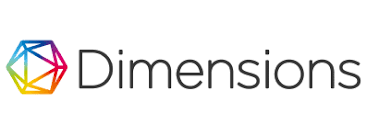RESPONS PERTUMBUHAN DAN HASIL TANAMAN SELEDRI (APIUM GRAVEOLENS L.) TERHADAP MEDIA TANAM DAN KONSENTRASI LARUTAN NUTRISI YANG BERBEDA PADA WICK SYSTEM
(1) Faperta Unmul Samarinda
(2) Fakultas Pertanian Universitas Mulawarman Samarinda
(3) Fakultas Pertanian Universitas Mulawarman Samarinda
(*) Corresponding Author
Sari
This research aims to find out 1) the interaction between the medium of planting and the concentration of nutrient solutions to the growth and yield of celery plants hydroponically. 2) types of planting media that can give different influences on the growth and yield of celery plants, and 3) concentration of nutrient solution that provides the best growth and yield of celery plants in different planting media.The research was conducted from December 2019 to February 2020 at the Integrated Laboratory of the Faculty of Agriculture of Mulawarman University, Samarinda. The research used factorial exsperiment 3×4 on Randomized Completely Block Design (RCBD), replicated three times with each treatment consisting of three plants. The first factor is the planting medium consisting of rockwool, charcoal husk, and combination of charcoal husk + tea amps. The second factor is the concentration of AB Mix nutrient solution consists of 500, 1,000, 1,500, and 2,000 ppm. The data was analyzed with test F and continued Least Significant Difference (LSD) test with a level of 5%. The results showed that there is an interaction between planting media and concentration of nutrient solution in the growth and yield of celery plants. The interaction between the combination of charcoal planting media + tea pulp and concentration of 1,500 ppm is not real with the interaction of rockwool planting media and concentration of 1,500 ppm. From various types of planting media used, charcoal husk planting media provides the best influence on the growth and yield of celery plants. Based on polynomial orthogonal test the concentration of nutrient solution with an optimum point of 1,460.84 ppm affects the growth and yield of celery plants with a maximum dry weight of 2.14 g.
Kata Kunci
Teks Lengkap:
PDFReferensi
Grewal. 1998. Propagation of ornamental Plants. New Delhi: Kalyani Publisher.
Haryoto, A. 2009. Bertanam Seledri Secara Hidroponik. Kanisius, Yogyakarta.
Kementrian Kesehatan Republik Indonesia. 2017. Hari Gizi Nasional 2017, Ayo Makan Sayur dan Buah Setiap Hari. www.kemkes.go.id. Diakses 13 September 2020.
Mas’ud, H. 2007. Sistem Hidroponik dengan Nutrisi dan Media Tanam berbeda Terhadap Pertumbuhan dan Hasil Selada. Jurnal Media Litbang Sulteng 2(2): 131-136.
Nurmayanti, T. R. 2008. Efektifitas Air Kelompokapa dan Ampas Teh Terhadap Pertumbuhan Tanaman Sri Rejeki (Aglonema donna carmen) pada Media Tanam yang Berbeda. Surakarta.
Perwitasari. 2012. Pengaruh media tanam dan nutrisi terhadap pertumbuhan tanaman pakchoi dengan sistem hidroponik. Jurnal Agrovigor. Vol 1(5): 14-19
Rahayu, A. 2014. Pengaruh macam media dan konsentrasi pupuk fermentasi ampas tahu terhadap pertumbuhan dan hasil tanaman seledri (Apium graveolens l.) secara hidroponik. Jurnal Ilmiah Ilmu Tanah dan Agroklimatologi. 5(11): 75-82.
Sari, R. 2016. Pengaruh media tanam pada berbagai konsentrasi nutrisi terhadap pertumbuhan dan hasil seledri dengan sistem tanam hidroponik NFT. Jurnal Daun. 3 (1) : 12-17
Steel, R.G.D. dan Torrie, J.H. 1989. Prinsip dan Prosedur Statistik. Terjemahan Bambang Sumantri. Gramedia Pustaka. Jakarta.
Sudarsono, E. 2014. Pemanfaatan Limbah Teh, Sekam Padi dan Arang Sekam sebagai Media Tumbuh Bibit Trembesi (Samanea saman). Jurnal Sylva Lestari. Vol 2 (2) : 61-70.
Sunarjono. 2003. Bertanam Seledri. Kanisius. Yogyakarta.
Tripana, B. 2018. Respon konsentrasi nutrisi hidroponik terhadap tiga jenis tanaman sawi (Brassica juncea L). Jurnal Agritrop. Vol 16 (2) : 237-249.
DOI: http://dx.doi.org/10.31602/zmip.v46i2.4330
Refbacks
- Saat ini tidak ada refbacks.
##submission.copyrightStatement##
This work is licensed under a Creative Commons Attribution 4.0 International License.




